Along these intertwining lines one can follow a constant concern with creating non-discursive languages, particularly in the fields of design and Concrete poetry, a concern also encompassing the question of the materiality of discourse within “technological civilization.” In this context design became a tool to mediate the relationship between human, machine, and environment, with Concrete poetry serving as a general project of aesthetic information: “in everyday language and in ‘visuality’ Concrete poetry appears,”1 in advertising copy, newspapers headlines, book layouts, television slogans, and bossa nova lyrics. Paths of exchange were, however, never straightforward. With further investigation, important specificities pertaining to the Brazilian participants in this trans-continental cultural discussion emerge, expressed in concepts such as “sensible rationalism” and “tropical consciousness.” The idea of a “critical nationalism” arose from anthropophagic reasoning, a way to rethink the poetic function.
The Poetry of Design
A search for multidimensional languages between Brazilian and German modernists
Max Bill’s exhibition at the São Paulo Museum of Art (MASP) and first place award for Tripartite Unit in the sculpture prize of the first São Paulo Biennial in 1951 had a significant impact on the formation of the Brazilian Concrete movement. This was a starting point for contact between Brazilian and German artists and designers that would deepen over the next two decades.
The Concrete movement arose simultaneously in São Paulo and Rio de Janeiro. Based on principles of rationality, geometry, and mathematics, its goal was to stand against expressionist figurative painting and the abstract tendency in general by elaborating a self-referential vocabulary of purely plastic materiality—that is, lines, planes, and colors. For its exponents, the essential aspects of visual art were matter, space-time, and movement,2 with a re-signification of pictorial space’s two-dimensionality at its core. Art was considered as a form of knowledge, and the artwork as a real and autonomous object. That is to say, the Concrete movement denied the symbolic and subjective dimension of art, privileging instead the idea that art objects conveyed a visible idea. (Fig. 1)
To discuss modern plastic language, the movement defended a universal art that through collaboration with industry and the mass media would reach the sphere of the everyday, unifying art and life. Design played a fundamental and inseparable role in this conception of art.
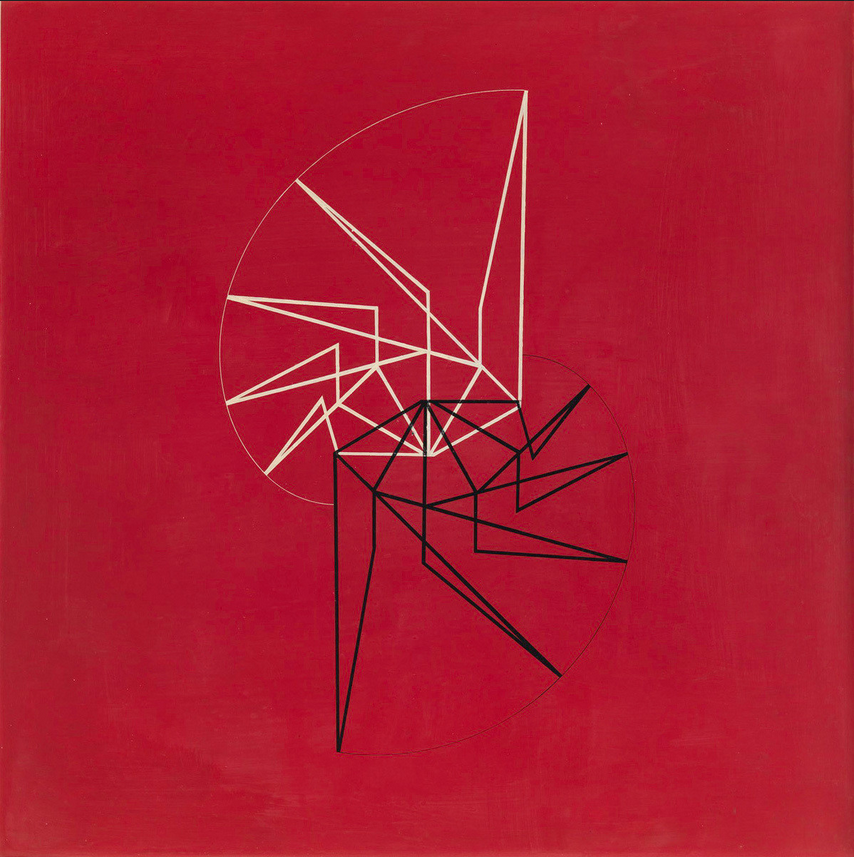
Fig. 1. Waldemar Cordeiro, Visible idea, 1956.
While the Concrete movement was gaining practitioners in Brazil, in Germany Inge Scholl, Hans Werner Richter, and Otl Aicher—together with Max Bill—were founding, the Hochschule für Gestaltung-Ulm (HfG-Ulm) as part of the war recovery effort. The school adopted an anti-fascist political approach, with one primary goal being to “reconcile what they perceived as the fateful historical antagonism of technical civilization and German Kultur.”3 Under the direction of Max Bill, HfG-Ulm’s first phase was unique for including in its curriculum both general media studies (politics, sociology, journalism, radio and film) and art studies (photography, advertising, painting, industrial design and architecture). It was also notably influenced by the Bauhaus, Constructivism, and other European avant-garde movements. Design was considered part of the broader field of art; a constant pursuit of “Die gute Form,” through which Bill intended to achieve harmony between “the form of the object and its use,”4 thus transforming the relationship between producer and consumer. The beauty of industrially produced objects would result from their “reflection of function at the level of form.”5 This discourse, dominant during Bill’s years at the School, was re-appropriated by Brazil’s Concrete movement,6 inaugurating a specific language based on structural thinking, with a deep perception of the materiality of design. During the 1950s, discussions involving Bill were held around the possibility of creating a design school at the Museum of Modern Art in Rio de Janeiro (MAM-RJ), for which the Argentinian artist and designer Tomás Maldonado, a professor at Ulm, was assigned to write a curriculum proposal. Although the school never came into being, courses and lectures did take place at MAM, including a visual communication course co-taught by Maldonado and Aicher.
However, as early as 1956, a shift from Bill’s “Die gute Form” notion of design to an idea of design-as-science began to occur at Ulm, championed by Maldonado. This new notion of design, described as “scientific operationalism,”7 evolved from an object-based emphasis to one that was process-based, with the focus turning towards information, communication, processes, and systems. (Figs. 3 and 4)
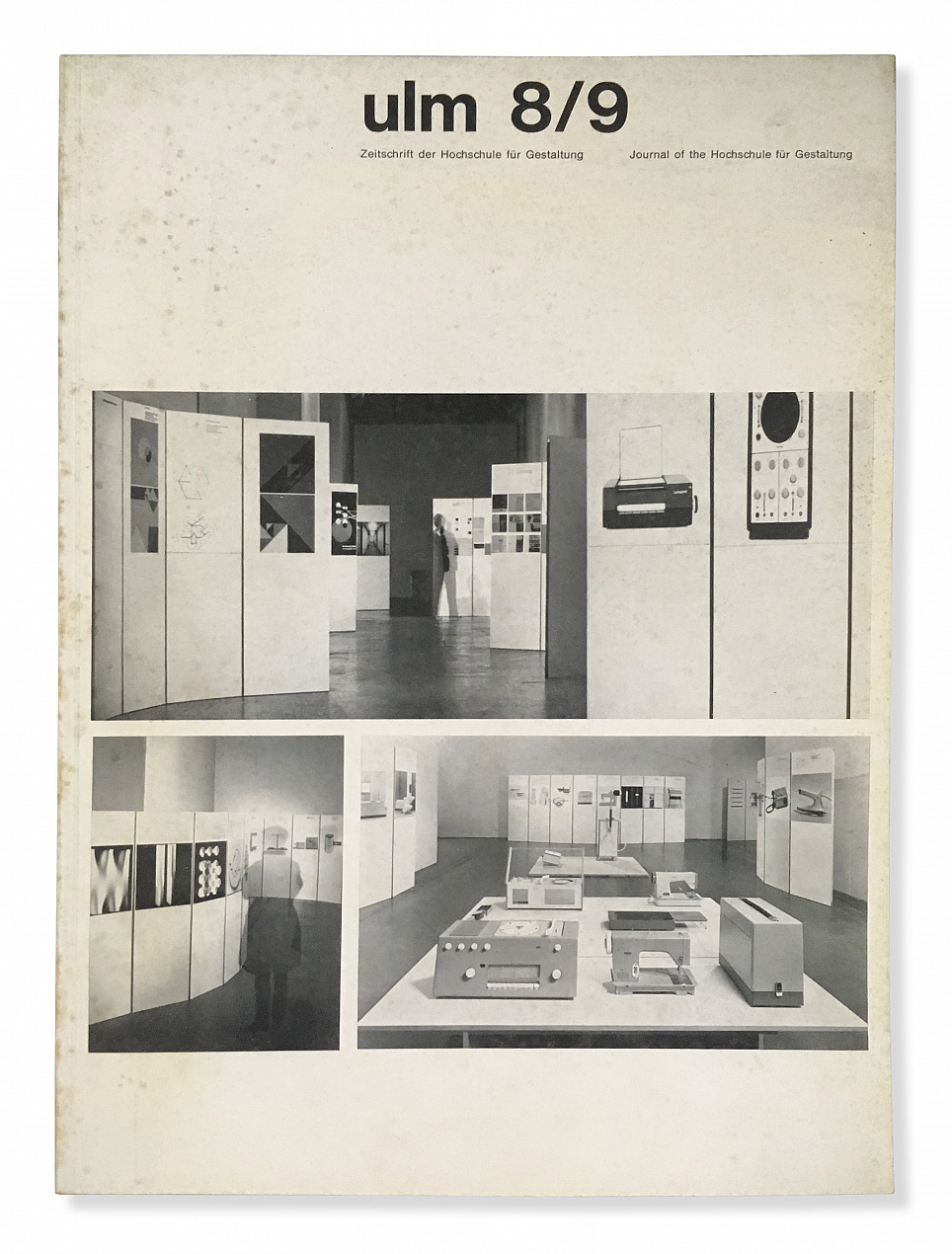
Fig. 3. Ulm Journal 8/9, 1963.

Fig. 4. Ulm Journal 8/9, “Alphabet” of the new symbol system for Electronic Data Processing Machines ELEA 9003 (1960/1961), 1963.
In the early 1960s, an Industrial Design School (ESDI) was founded in Rio de Janeiro. Its first curriculum referred to the Maldonado plan for the proposed MAM school and adopted the scientific approach then prevailing in Ulm.8 At ESDI, exchanges between Brazil and Germany were constant: former HfG-Ulm student Gui Bonsiepe worked there as a guest instructor; German philosopher Max Bense taught several courses; and the Brazilian Concrete poet Décio Pignatari worked there as a professor of information theory.
The attempt begun at HfG-Ulm to further elaborate and define design’s scientific domain had several consequences. In order to understand and act upon so-called “technological civilization,” practitioners of “scientific operationalism” sought to distinguish design from art, pointing to the ways design deviates from art’s language and the fact that design is often considered a language in itself. The posterior systematization of a “designerly way of thinking and communicating,”9 an approach possessing a specific stance towards knowledge, or of design’s undergoing an “iconic turn”10 suggestive of the visual plane’s capacity to act as a cognitive domain, are theoretical results of this new approach to design that stand in contrast to a supposed discursive supremacy. Design began to be thought of as a cognitive process with the potential to bridge different languages (in a search for its own), overcoming the long logocentric tradition.
Language as Design
Concomitant with developments in the field of visual arts and design at the beginning of the 1950s, interactions between Brazil and Germany quickly expanded to other spheres, leading to the exchange of experiences and elaboration of shared theoretical positions between poets and theorists from the two countries. As in the field of design, poetry was based on the resumption of a constructive corpus that revolved around the European avant-garde, mainly the De Stijl movement and Bauhaus school.11 This found expression in poets’ incorporation of a structural and materialist framework—characterized by specific technical procedures, as we shall see—and the defense and use of the mass media, which granted poetry a social character. No longer produced for the individual, the Concrete poets considered themselves as producers for the collective. In 1952, Pignatari and two other Brazilian poets, brothers Augusto and Haroldo de Campos, had created the Noigandres12 group, decreeing an end to the historical cycle of verse and a taking over of the domain of the page on a new basis. As a poetic practice, the distribution of words and letters in the concrete graphical space of the page led to tighter relationships with contemporary experimentation in other fields such as music, painting, architecture, and design.
The suggestion to attribute the name “Concrete poetry” to an anthology planned in conjunction with the Bolivian-Swiss poet Eugen Gomringer came from the Noigandres group,13 and with this decision the movement began to gain an international dimension. Gomringer, Max Bill’s assistant at HfG-Ulm, had first met Pignatari while the latter was visiting Brazilian students at the School. This meeting led to an intense exchange of letters, based on shared affinities between the work of Gomringer and the Brazilian poets.
In the manifesto “From line to constellation” (1954), Gomringer claimed the “constellation” as the simplest poetic structure based on words. For Brazilian poets, the verse would similarly be replaced by the “ideogram”14 (spatial-temporal structure), emphasizing relationships between words rather than their discursive juxtaposition. Moreover, Gomringer’s manifesto emphasizes that “each constellation is a reality in itself and not a poem about something or other,”15 in the same way that Brazilian poets at the time considered the poem as an autonomous system that should explore its own materials: words, syllables, letters. (Fig. 5)
Contemporary German poets’ fascination with Concrete poetry could be explained by its aim of making poetry available for everyone—functional, usable, universal—a process whereby poetry gained a social responsibility; the same tendency observed in the design field. As the Brazilian researcher Amélia Paes Vieira Reis argues: “… the center of poetry is displaced from the ‘self’ to the universal, from the subjective to the objective, replacing the muse by the method. This emphasis on the method could be analyzed as a consequence of the Concrete incubation that happened, to a large extent, at the HfG-Ulm, which was instrumental in the development of a design methodology.”16
Concrete poetry emerged in a context characterized by a culture defined as “visual,” placed under the “sign of nonverbal communication.”17 In its search for a non-discursive language, it revealed the capacity of language-as-design, with the poet assuming the role of a designer of languages, capable of perceiving or creating new relationships and sign structures. As Pignatari asserts:
Our century is the century of planning, of design and designers: industrial design and architecture are studied and projected as messages and as languages; writers, poets, journalists, advertisers, musicians, photographers, filmmakers, radio and television producers, painters and sculptors are beginning to become aware of designers, forgers of new languages.18
A Verbivocovisual Language
The cooperation between Décio Pignatari and Eugen Gomringer unfolded in several ways. One of these was the encounter between the Brazilian Concrete poets and German theoretician Max Bense. Bense, whose work focused on the relationship between aesthetics and technology, had developed a rational aesthetic, defining the components of the text, be it utilitarian or literary, as a repertoire of statistical language built according to information measurements as opposed to semantics. In this excerpt from the experimental curriculum for HfG-Ulm’s Information Department, where Bense worked as a guest professor, an approximation between his theories and those of the Concrete poets regarding the treatment of language in relation to new technologies is evident in the procedures he proposed:
Conversion of natural languages and artificial languages into precise languages.
Experiments on grid systems, shortening techniques and montage techniques.
Concentration and dispersion of form and topics.
Syntactic and semantic shortening, compression, distortion, lengthening, alienation.
Accidental and attributive descriptions, phenomenological reduction and deflation of meaning.19
Likewise, for Brazilian Concrete poets the word was a purely objective thing, free from redundancies and inaccuracies, with the poem perceived as an experimental search for clarity and integrity in language—concepts borrowed from theories of communication, information, and cybernetics. The Brazilian manifesto “Pilot Plan for Concrete Poetry,” published in 1958, states:
renouncing the struggle for “absolute,” concrete poetry remains in the magnetic field of perennial relativeness. chronomicro-metering of hazard. control. cybernetics. the poem as a mechanism regulating itself: feed-back. faster communication (problems of functionality and structure implied) endows the poem with a positive value and guides its own making.20
The word in its spatial-graph, acoustical/oral, and semantics dimensions is here considered as a “thing-word,” organized by direct juxtaposition, proximity, or resemblance upon the physical space of the page—an analogical rather than logico-discursive entity. In order to replace the linear syntax of verse with structure-content, the ideogram was proposed: “tension of things-words in space-time.” Poetry emerges as a “verbivocovisual”21 system, denoting the interweaving of three dimensions of language in poetic creation, defined here as “a specific linguistic area which shares the advantages of nonverbal communication, without giving up word’s virtualities. ... coincidence, and simultaneity of verbal and nonverbal communication.”22 (Fig. 6)
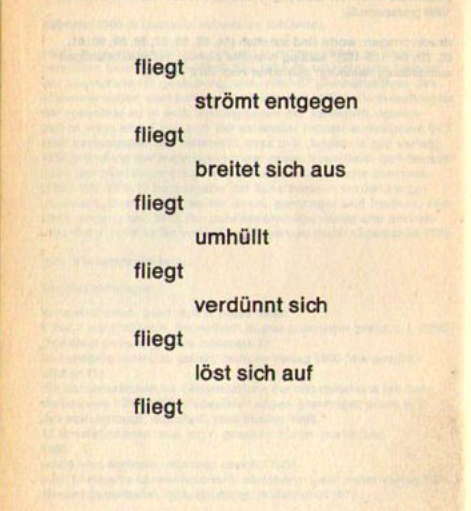
Fig. 5. Eugen Gomringer, Fliegt, 1951. From: Konkrete Poesie: Anthologie von Eugen Gomringer, Phillipe Reclam, Stuttgart 1983.
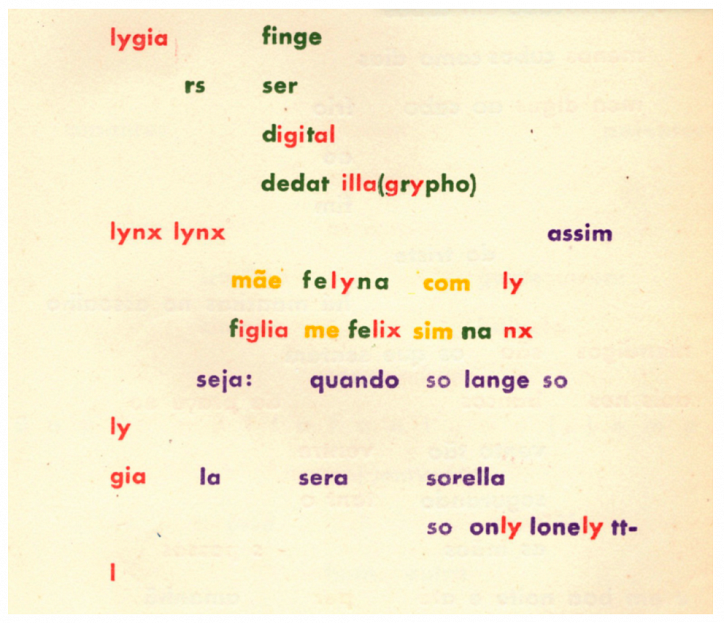
Fig. 6. Augusto de Campos, Lygia Fingers, Poetamenos series, 1953. From: Noigandres, n. 2, 1955. Mindlin Library, São Paulo.
Similarly, Bense attested that “the word is not used as a carrier of intentional meaning, but rather as an element of material design, in such a way that meaning and design (Gestaltung) mutually condition and express one another.”23 Bense’s idea that there is “no substance without form” at the same time that there is “no ideality without matter” aimed at combining several dimensions of language, searching for a close relation between sensitivity and rationality.
Haroldo de Campos24 introduced himself to Bense as Gomringer’s friend in a letter from 1959. Six months later, an exhibition on the Noigandres group production opened at Studiengalerie Stuttgart, attesting to the warm reception Bense gave the Brazilians. In the 1960s, Bense and his colleague (later his wife), the semiotician, publisher, and translator Elisabeth Walther,25 organized a number of exhibitions and publications in Stuttgart, including several editions of the rot series devoted to Brazilian artists, designers, and poets. (Fig. 7) These disparate activities helped to develop the dialogue between the theories of Bense and Walther and the Brazilians’ artistic/poetic production.26 In 1965, as a result of this close interaction and his five visits to Brazil, Bense wrote the philosophical travel report, “Brasilianische Intelligenz: Eine cartesianische Reflexion.”
Words and Worlds
According to Bense, Brazil was characterized by an absence of history in the sense of an absence of traditions, making its people predisposed to forms of “history-creation”27 that projected into the future rather than being tied to the past. In “Brasilianische Intelligenz…” Bense suggested that in Brazil “the idea of design emerges as the dialectical substitute for what in Europe we call historical consciousness.”28 Design appears here as a synonym for “history-creation,” an essential concept within his interpretation of the tropics. The researcher Nathaniel Wolfson emphasizes that, for Bense, Europe’s historicism contrasts with the post-historic and uninhibited potential of the Brazilian future, manifested in general by concrete aesthetics. Bense recognized in Brazil a “tropical temporality, defined by a constructed existence outside (European) history,”29 the suggestion being that in the tropics there existed a different way of perceiving modernity, expressed by the union of two poles: technical rationality and poeticism.
In an attempt to define this “tropical consciousness” characterizing Brazilian culture, Bense identified apparently contradictory elements: improvisation and spirituality on the one hand, and concreteness and a predisposition for a Cartesian mindset on the other. These existed in a dialectical relationship that would come to form the essence of this tropical reality, constituted by the idea of tension:
The tropical state of consciousness, which includes abundance as a virtual system of creative capacity and delights in the parade of ideas, images, and words, pours insights as ones. So dreams are more real than facts, the desire more real than its purpose and the cruel advantage of power finally lies in the fact that it almost always ends up in counter-revolution that which began as revolution.30
This same characterization can be observed in the field of Concrete poetry, where one can observe how this dialectical relationship between opposites projects poetry beyond purely rational and Cartesian thinking, approximating it to what might be a point of balance between the rational and the sensitive, between words and worlds.
While adopting a constructive, rationalist framework asserting a position contrary to a “subjective and hedonistic poetry of expression,” or advocating the shift from a “phenomenology of composition” to the “mathematics of composition,” one can observe in the Noigandres group’s output a recognition of the sign as a materially sensitive being. The word-object is seen as a complete organism or a living cell, “with psycho-physical-chemical properties, tactile antennae of circulation heart: alive.”31 (Fig. 8)
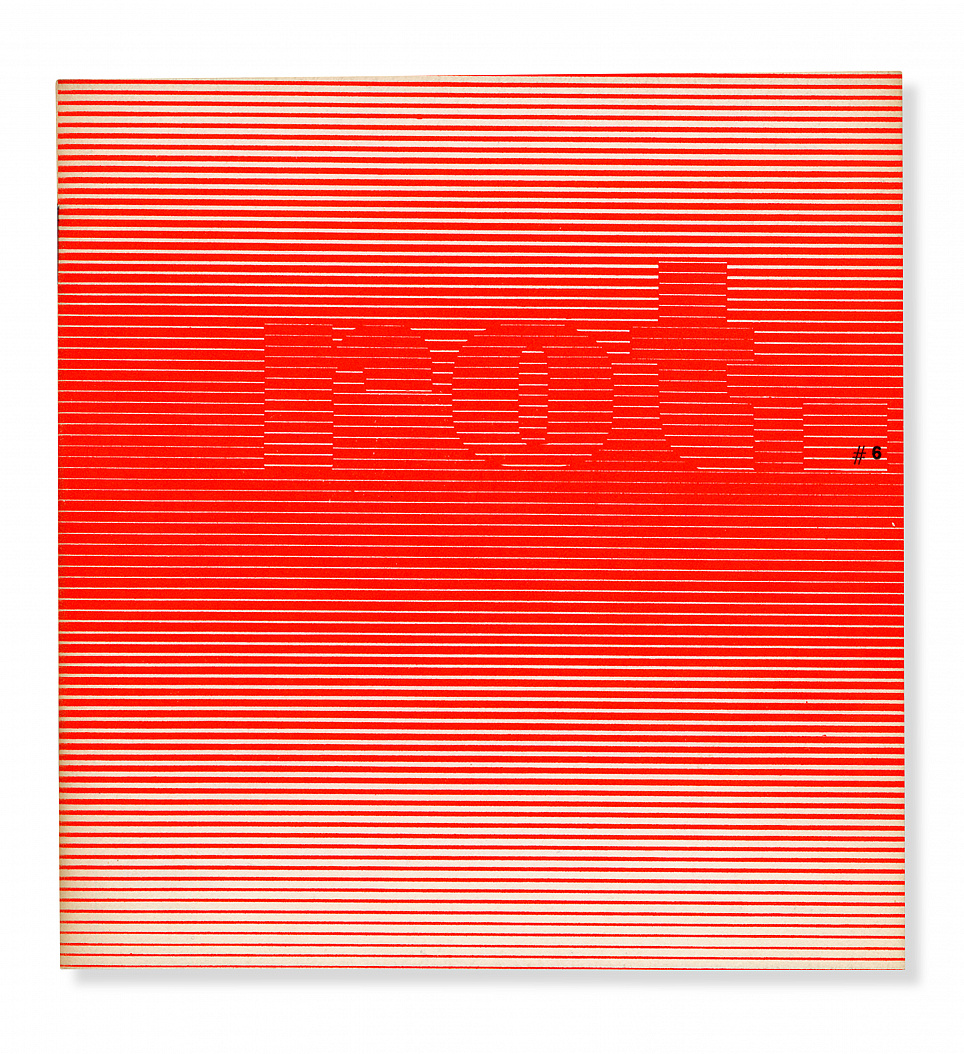
Fig. 7. Max Bense, Rot series 6, Modelle, 1962. Image courtesy Heike Werner heikewerner.com

Fig. 8. Décio Pignatari, Organism, 1960. From: Invenção, n. 5, 1966. Mindlin Library, São Paulo.
On several occasions, Brazilian Concrete poets explored the sensitive character of language. Décio Pignatari in 1956 referred to a “sensitive language” and an “idea-emotion,” presenting the poem as a being: “the poem is.”32 In 1957, Haroldo de Campos invoked a script of constructive rationalism, yet emphasized that this rationalism would be “sensitive, not scientific,” where a “geometry of the eye” would work with sensitivity data.33 As the researcher Adam Joseph Shellhorse attests, “the concrete word becomes a sensory synthetic ensemble that explores its dynamic structure as a being of language.”34
Augusto de Campos, in 1956, published a text on this topic that may guide us through a possible trajectory elucidating this issue:
Functions-relations graphic-phonetic (“factors of proximity and similarity”) and the substantive use of space as an element of composition entertain a simultaneous dialectic of eye and breath, which, combined with the ideographic synthesis of meaning, creates a sensible “verbivocovisual” totality, so as to juxtapose words and experience in a narrow phenomenological attachment, previously impossible.35
At this point, when asked about the possible duality contained in Concrete poetry, Augusto presented it as a result not only of a deductive and rationalized operation, but also of intuition and sensitivity, a juxtaposition he described as “sensitive rationalism.”36
Could this phenomenological attachment be the point of difference on which Brazilian Concrete poetry in particular and Brazilian modernity in general are based? In 1981, Haroldo de Campos addressed the necessity to think the national in its dialogical relationship with the universal, defending Anthropophagy as the main way to do so—particularly in “From anthropophagic reason: dialogue of difference in Brazilian culture.” Here he also offered us some useful guideposts for thinking about specifically Brazilian artistic production.
First developed in 1928 by Oswald de Andrade in the “Anthropophagic Manifesto,” the concept of Anthropophagy embodied the mode of reasoning of indigenous societies whereby otherness, through the practice of cannibalism, is affirmed and embraced as a power. Andrade advocated a “technized natural man,” proposing an “anthropophagic conception of the world based on the dialectic synthesis or tension between the savage and the ‘civilized’ world, the popular and the erudite, freedom and technique.”37 For Haroldo, Anthropophagy constituted the “procedure of critically devouring the universal legacy, not from a perspective of the ‘good savage’ but from the viewpoint of the ‘bad savage,’ white-eater, cannibal.” In this sense, Anthropophagy would be “a process of transculturation, a critical view of history as a negative function.”38
Based on anthropophagic procedure, Concrete poetry engaged in a process of “transcreation,”39 “transversalized nationalist totemisms, placing Brazilian art in a polyglot and multi-vocal aesthetic field, without previous or extrinsic hierarchies.”40 Anthropophagic reason would deconstruct “logocentrism”41 along the discursive modes of argumentation inherited from Western culture. As a proposition, critical nationalism arose as a dialogical movement of difference: contradicting the supposed dominant logic of the metropolis-colony flow. The idea of influence ceased to exist, and a new process began, whereby supposedly peripheral actors “suddenly appropriated the total code, claimed as their own patrimony, in order to re-cannibalize a poetics.”42
Recognizing other sensory dimensions (visual/vocal) as possible cognitive domains, both design and poetry—aesthetic practices of technological civilization—stood against discursive primacy in the domain of cognition. A discussion of non-discursive languages reaching a balance between the rational and the sensitive suggests the potentialities of knowledge development through encounters between design, poetry, and technology.
In the 1950s and 1960s, with European reconstruction and the rapid growth of Brazilian industry well under way, there was an impulse within poetry and design movements to act effectively in the daily life of technological civilization, this being one principal aspect of the process of reconstructing modernity. By turning design into science, HfG-Ulm sought to create an understanding of design as a cognitive domain mediating a new relationship between human, machine, and environment. The appearance of the first computers had a fundamental role in this process, the possibility arising that mathematical, topological, or permutative procedures might become the basis for artistic and design creation. The technological scenario of the mass media places Concrete poetry within the scope of everyday language production, as a useful and consumable poetic form. Poets strove to create an economic structure, analogous to the speed of modern communication and technology, prefiguring for the poem its reintegration into everyday life—similar to how the Bauhaus approached the visual arts—either as a vehicle for commercial advertising (newspapers, posters, TV, cinema, etc.) or an object of pure enjoyment (architectural works or music, for example). In either case, the aim was to approach the word, in an elementary sense, as if it were being heard for the first time.
In these constellations, as if springing from the materials presented, the possibility of multidimensional languages arises, as proposed by the Brazilian Concrete poets— evoking a synesthetic character of discourse, collaborating in how we transform the way we relate in/with the world. The suggested encounter between word, world, and user/reader, although first occurring in specific places and for a specific time period, could inform us on our way.
- 1 Augusto de Campos, Haroldo de Campos & Décio Pignatari: Teoria da Poesia Concreta: textos críticos e manifestos 1950 – 1960, Ateliê Editorial, São Paulo 2006, p. 7. All translations by Ilana Tschiptschin, unless otherwise noted.
- 2 Waldemar Cordeiro: “Manifesto Ruptura,” in Aracy Amaral (ed.): Projeto Construtivo Brasileiro na arte: 1950–1962, Museu de Arte Moderna and Pinacoteca do Estado, Rio de Janeiro and São Paulo, 1977, 69–72. The manifesto—written by Waldemar Cordeiro and signed by Geraldo de Barros, Lothar Charoux, Csaba Fejér, Leopold Haar, Luis Sacilotto and Anatol Wladyslaw—was first published on the occasion of the group’s opening exhibition at the Museum of Modern Art, São Paulo, in December 1952.
- 3 Paul Betts: “Science, Semiotics and Society: The Ulm Hochschule fur Gestaltung in Retrospect,” Design Issues, Vol. 14, no. 2 (Summer, 1998), p. 68.
- 4 Max Bill in an interview with Kathryn Hiesinger from 1983. Accessed May 02, 2020, http://www.uncubemagazine.com/ blog/15161005
- 5 See Peter Kapos: “Art and Design: The Ulm Model.” Accessed 20 May, 2019, http://www.ravenrow.org/texts/83/
- 6 The interactions between the Brazilian Concretists and the Ulm school intensified after artists and designers such as Almir Mavigner, Mary Vieira, Alexandre Wollner, and Yedda Pitanguy began studying at the School.
- 7 Tomás Maldonado: “New Developments in Industry and the Training of the Designer,” Ulm Journal 2, (October 1958), p. 27.
- 8 See Anastassakis: Triunfos e Impasses, Lamparina, Rio de Janeiro 2014, pp. 120–146.
- 9 Bruce Archer: “Design as a discipline,” Design Studies, Vol. 1, no. 1 (July 1979), p. 20.
- 10 Gui Bonsiepe: “The Uneasy Relationship between Design and Design Research,” in: R. Michel (ed.): Design Research Now, Board of International Research in Design, Basel 2007, pp. 25–38.
- 11 See Gonzalo Aguilar: Poesia concreta Brasileira: as vanguardas na encruzilhada modernista. Edusp, São Paulo 2005, p. 39. The group also referred to a paideuma, a cast of authors whose ideas served to renew the tradition. Included were Ezra Pound, James Joyce, E.E Cummings, Stéphane Mallarmé, and the Brazilians João Guimarães Rosa, João Cabral de Melo Neto, and Oswald de Andrade.
- 12 The term “Noigandres” was taken from Ezra Pound’s Cantos XX, as “a synonym of poetry in progress, as a motto of experimentation and poetic research collaboratively.” Augusto de Campos, Haroldo de Campos, & Décio Pignatari: “Sinopse do movimento de poesia Concreta,” in: Teoria da Poesia Concreta, p. 193.
- 13 See de Campos, de Campos & Pignatari: “Sinopse do movimento de poesia concreta,” p.194.
- 14 The concept, extracted from Ezra Pound’s “ideogrammic method,” was based on his study of The Characters of the Chinese Language as a Medium for Poetry by the American orientalist and art critic Ernest Fenollosa. In this process of composition, two things combined do not produce a third, suggesting, rather, a fundamental relationship between both. By doing so, the Chinese ideogram brings language close to things. See Haroldo de Campos: “Aspectos da Poesia Concreta,” in: Teoria da Poesia Concreta, p. 138.
- 15 Eugen Gomringer: “From Line to Constellation,” in: Concrete Poetry: A World View, Indiana University Press, Bloomington 1968. Accessed July 20, 2019, http://www.ubu.com/papers/gomringer01.html.
- 16 Amélia Paes Vieira Reis: “Design concretista: um estudo das relações entre o design gráfico, a poesia e as artes plásticas concretistas no Brasil, de 1950 a 1964.” Dissertação de mestrado, PUC-Rio, 2005, p. 52.
- 17 Décio Pignatari: Informação, Linguagem, Comunicação, Cultrix, São Paulo 1981, p. 76.
- 18 Ibid., p. 15.
- 19 Max Bense: Texte und Zeichen als Information, in: A. Andersch (ed.) Texte und Zeichen: Eine literarische Zeitschrift, 2 (4), 1956, pp. 437–440. Cited in: David Oswald, “The Information Department at the Ulm School of Design,” 8th Conference of the International Committee for Design History & Design Studies, São Paulo, p. 4.
- 20 Haroldo de Campos, Augusto de Campos & Décio Pignatari: “Plano Piloto para Poesia Concreta,” Noigandres 4, 1958, n.p.
- 21 The term “verbivocovisual” is a neologism coined by James Joyce. As appropriated by the Concrete poets, it indicates the interweaving of the visual, vocal, and verbal dimensions of language in poetic creation. For them, the vocal dimension refers to the spoken word, or its sound, while the verbal dimension refers to the written word and its semantic aspect (meaning).
- 22 de Campos, de Campos & Pignatari: “Plano Piloto para Poesia Concreta,” n.p.
- 23 Max Bense: “Konkrete Poesie,” Rot 21, Stuttgart, May 1965. On this issue see also Elisabeth Walther: “Max Bense’s Informational and Semiotical Aesthetics.” Accessed May 3, 2019, http://www.stuttgarter-schule.de/bense.html. The search for a relation between sensitivity and rationality is what motivated Bense’s attention to Brazilian modernity, explored further in his book: Brazilian Intelligence. a Cartesian reflection, Limes Verlag, Wiesbaden 1965.
- 24 Max Bense, Elisabeth Walther, and Haroldo de Campos continued to correspond until Bense’s death in 1990. An in-depth study of these letters would be of great value for understanding the intellectual and theoretical exchange that occurred within the two-way path between Brazil and Germany during this period. For an overview on the subject see: Nathaniel Wolfson: “A Correspondência entre Haroldo de Campos, Max Bense e Elizabeth Walther: Uma primeira leitura,” Circuladô, Vol. 2, no. 2, October 2014, pp. 79–94.
- 25 The German theoretician Elisabeth Walther was a member of the Stuttgart group alongside Bense, and other writers and theorists. She taught at HfG-Ulm, the University of Stuttgart, and ESDI in Rio de Janeiro. She edited the magazine Augenblick from 1955 to 1960, Semiosis, the international journal of semiotics and aesthetics, from 1976 to 1990, and co-edited the series edition rot from 1960 to 1990.
- 26 In 1961 Max Bense visited Brazil for the first time; in 1962 he and Elizabeth Walther published the “Noigandres / Konkrete Texte” anthology; in 1963 Júlio Medaglia organized the exhibition “Konkrete Dichtung aus Brasilien,” at the University of Freiburg and Max Bense promoted a new exhibition of Concrete Brazilian poetry in the Eggert Bookstore in Stuttgart. Bense also organized several exhibitions of Brazilian artists in the Studiengalerie Stuttgart, such as Almir Mavigner (1957), Concrete poetry (1959), Bruno Giorgi (1962, 1966), Alfredo Volpi (1963), Lygia Clark (1964), Aloísio Magalhães (1965), Mira Schendel (1967), and Fonseca, Azevedo, Torres e Ianelli (1968), almost all accompanied by an edition of rot series.
- 27 See Max Bense: “Sôbre Brasília,” Invenção, no. 2, 1962, 64–67.
- 28 Max Bense: Inteligência Brasileira: uma Reflexão Cartesiana, Cosac Naify, São Paulo 2006, p. 30.
- 29 Nathaniel Wolfson: “Brazil After History, or Two German Accounts of Postwar Brazilian Literature,” The Germanic Review 93, 2018, p. 84.
- 30 Bense: Inteligência Brasileira: uma Reflexão Cartesiana, p. 90.
- 31 Augusto de Campos: “Poesia Concreta,” in: Teoria da Poesia Concreta, p. 44.
- 32 Décio Pignatari: “Nova Poesia: Concreta,” in: Teoria da Poesia Concreta, p. 41–43.
- 33 See Haroldo de Campos: “Da Fenomenologia da Composição à Matemática da Composição,” in: Teoria da Poesia Concreta, p. 95.
- 34 Adam Joseph Shellhorse: “Subversions of the Sensible: The poetics of Antropofagia in Brazilian Concrete Poetry,” in: Anti-Literature: The Politics and Limits of Representation in Modern Brazil and Argentina, University of Pittsburgh Press, Pittsburgh 2017, n.p.
- 35 Augusto de Campos: “Poesia Concreta,” in: Teoria da Poesia Concreta, p. 44.
- 36 Augusto de Campos: “Racionalismo sensível,” interview by Ilana S. Tschiptschin, unpublished, 23 July 2019.
- 37 Renato Sztutman (ed.): Encontros Eduardo Viveiros de Castro, Beco do Azougue, Rio de Janeiro 2008, p. 12.
- 38 Haroldo de Campos: “Da Razão Antropofágica: Diálogo e Diferença na Cultura Brasileira,” in: Metalinguagens & Outras Metas, Perspectiva, São Paulo 1992, p. 234.
- 39 The art of transcreation (or critical-creative translation) arises from the need to adapt a translated text to a new reality. According to Haroldo de Campos, “in the translation of a poem, the essential is not the reconstitution of the message, but the reconstitution of the sign system in which this message is incorporated, of aesthetic information, not merely semantic information.” See Haroldo de Campos: A arte no horizonte do provável.
- 40 Viveiros de Castro: “Temos que criar um outro conceito de criação,” in: Encontros Viveiros de Castro, p. 169.
- 41 The term “logocentrism,” coined by Jacques Derrida in “Of Grammatology,” refers to the tradition of Western civilization that considers words and language as a fundamental expression of an external reality, privileging the linguistic sign over meaning. It holds the logos as epistemologically superior, the ideal representation. For Derrida, logocentrism is born with the Greek alphabet, which established Greek metaphysics as the foundation of philosophy and science. The age of logos begins the era of binary oppositions. See: https://lucian.uchicago.edu/ blogs/mediatheory/keywords/ logocentrism/ and https://knoow. net/ciencsociaishuman/ loso a/ logocentrismo/ Accessed August 8, 2019.
- 42 Campos: “Da Razão Antropofágica,” p. 246.
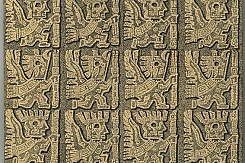



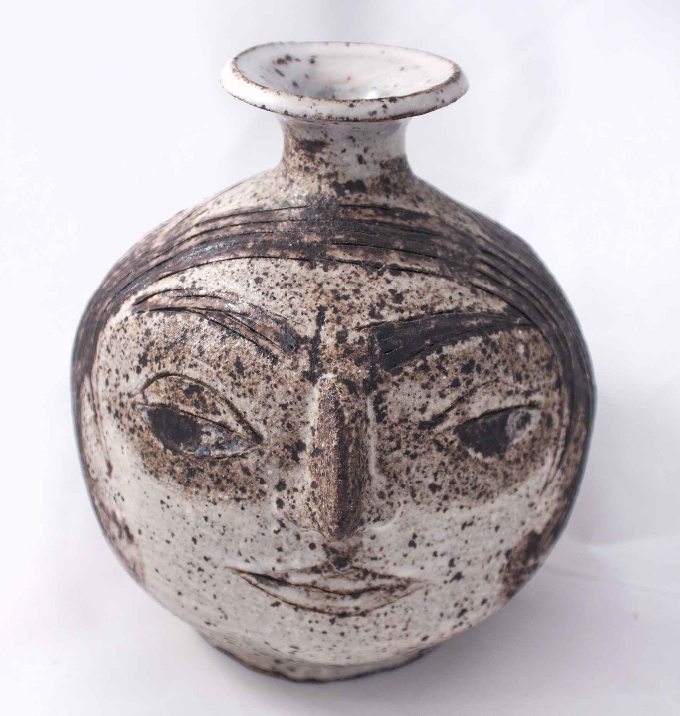

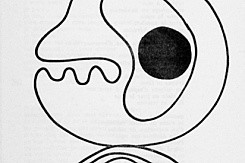

_crop.jpg?w=245&h=163&c=1)

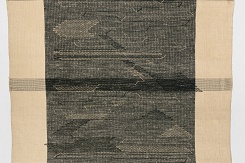









 Kopie.jpg?w=245&h=163&c=1)











